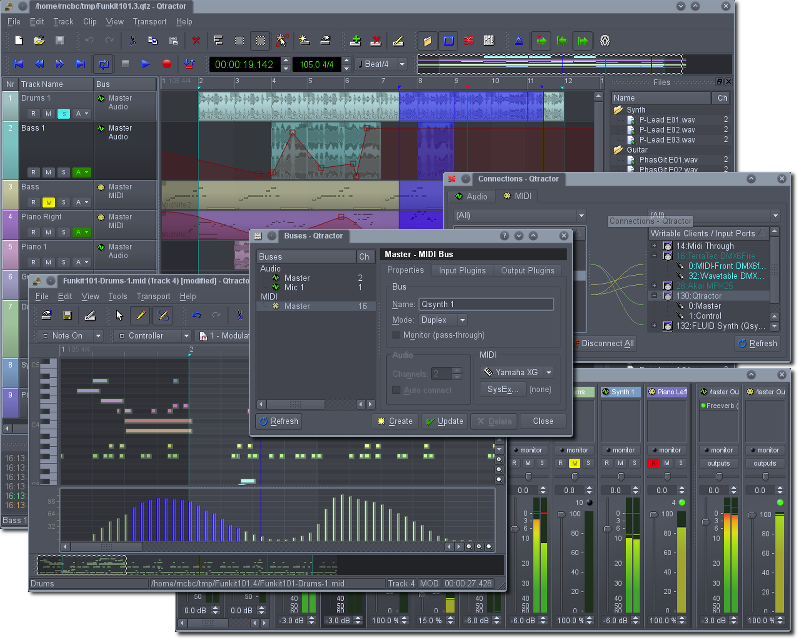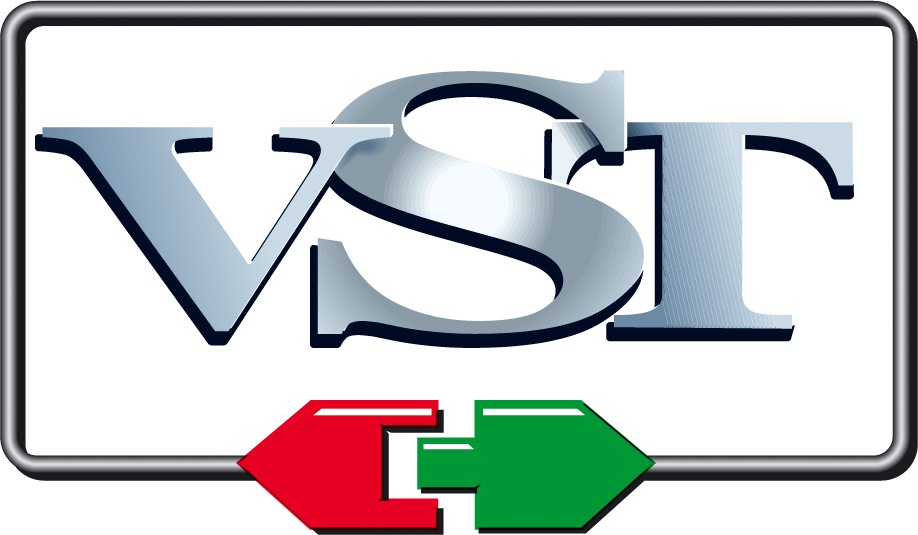|
Arguru
Juan Antonio Arguelles Rius (November 2, 1978 – June 3, 2007), also known as Arguru (sometimes Argu), was a prolific music software programmer and electronic musician, producer and songwriter, responsible for such applications as NoiseTrekker and Directwave. Co-founded the compandiscoDSPand was later hired by Image-Line and involved in the development of Deckadance and FL Studio 7. Arguru died in a car accident on June 3, 2007. Biography Juan Antonio Arguelles was born on November 2, 1978, in Málaga, Spain. In 1997, Arguru started out as one of the most productive plugin developers of the Jeskola buzz-scene. In 2000, he and Frank Cobos (known as "Freaky") began mixing psytrance as a duo in Malaga under the name Alienated Buddha. They released the album ''Inpsyde'' on Out of Orion in February 2002. In May 2000 he created Psycle until version 1.0, which he then released into the public domain. Arguru co-founded the software compandiscoDSPwith George Reales in July 2002discoDS ... [...More Info...] [...Related Items...] OR: [Wikipedia] [Google] [Baidu] |
Deckadance
Deckadance (often referred to as DD) is a DJ console and mixing tool developed by Image-Line software and acquired in 2015 by Gibson. Initially released in May 2007, it operates on Windows and Mac OS X, and comes in a House Edition and Club Edition. The latter has support for timecoded vinyl. Deckadance can be used as a standalone application or as a VST plugin inside VST-supporting software hosts like Ableton Live. It can host any VST-compliant effect or software synthesizer, and can be controlled by most MIDI controllers. History Deckadance was created by Image-Line as a mixing application for DJs. Image-Line worked closely with DJ and programmer Arguru to develop the first version, which was released for Windows in May 2007. After Arguru died in a car accident in June 2007, future versions were worked on by the Image-Line developers Arguru had been cooperating with, many of whom are also DJs. Deckadance was made compatible with Mac OS X after the release of versio ... [...More Info...] [...Related Items...] OR: [Wikipedia] [Google] [Baidu] |
Random Album Title
''Random Album Title'' is the third studio album by Canadian electronic music producer Deadmau5, released by Ultra Records and Mau5trap on September 2, 2008. The album includes the singles " Faxing Berlin", " Not Exactly" and " I Remember" (with Kaskade). Following the success of "I Remember" in the UK, ''Random Album Title'' later entered the UK Albums Chart at number 31 in May 2009. Songs The track "Slip" is named after its hook, which intentionally falls out of time with the beat and melody of the song. The original mix of " Faxing Berlin" is 8:37 compared to the mixed album version's length, which is only 2:36. Combined with its preceding acoustic piano intro on the continuous mix version it is 4:15. On the unmixed version, both these tracks are replaced by the original mix. The track "Arguru" was written in memory of Juan Antonio Arguelles Rius (nicknamed Arguru), an audio software developer and musician. The composition of the 2010 song "I Said" by deadmau5 and Chris La ... [...More Info...] [...Related Items...] OR: [Wikipedia] [Google] [Baidu] |
Image-Line
Image-Line Software (commonly known as simply Image-Line) is a Belgium, Belgian software company best known for its digital audio workstation program FL Studio and related audio plugins such as Sytrus and Harmor. Image-Line was founded in 1994. In 2007, Image-Line introduced Deckadance, a virtual DJ console application. The company also produced EZGenerator, a template-based web development, web editing program. History Early development Image-Line was founded by Jean-Marie Cannie and Frank Van Biesen, who after seven years of creating stock market software for Pavell Software, decided in 1992 to branch into video games. Their first product was an adult video game based on ''Tetris'', which they then offered on floppy disks in the ad section of ''Computer Magazine''. Around this time CD-ROM games such as The 7th Guest were becoming popular, inspiring Van Biesen and Cannie to begin working with Private, one of the larger producers of adult video games at the time. Private released ... [...More Info...] [...Related Items...] OR: [Wikipedia] [Google] [Baidu] |
Chris Lake
Chris Lake (born 8 August 1982) is a British electronic music producer and DJ. He rose to fame in 2006 with his hit single, "Changes", featuring Laura V. Musical career Lake first became recognized for his bootleg remixes of the Prodigy's "Climbatize", Leftfield's "Phat Planet", and Eurythmics' "Sweet Dreams", which he did under the alias Cristophe D'Abuc in 2002. By 2006, "Changes", featuring Laura V, reached the UK Singles Chart peaking at number 27. The track was licensed by Universal Music for a full worldwide release where it then reached number 10 on ''Billboard'''s Hot Dance Airplay chart. His 2007 single, "Carry Me Away" (featuring Emma Hewitt), topped the ''Billboard'' Hot Dance Airplay Chart. In 2012, Lake received his first Grammy nomination for collaborating with deadmau5 on the album ''4x4=12''. He scored his third consecutive top ten hit on the US dance chart with "Only One". "If You Knew" featuring Nastala, became his 4th consecutive top 10 single o ... [...More Info...] [...Related Items...] OR: [Wikipedia] [Google] [Baidu] |
Renoise
Renoise is a digital audio workstation (DAW) based upon the heritage and development of tracker software. Its primary use is the composition of music using sound samples, soft synths, and effects plug-ins. It is also able to interface with MIDI and OSC equipment. The main difference between Renoise and other music software is the characteristic vertical timeline sequencer used by tracking software. History Renoise was originally based on the code of another tracker called NoiseTrekker, made by Juan Antonio Arguelles Rius (Arguru). Then unnamed Renoise project was initiated by Eduard Müller (Taktik) and Zvonko Tesic (Phazze) during December 2000. The development team planned to take tracking software into a new standard of quality, enabling tracking scene composers to make audio of the same quality as other existing professional packages, while still keeping the proven interface that originated with Soundtracker in 1987. Version 1.0 was released in June 2002. Over the years ... [...More Info...] [...Related Items...] OR: [Wikipedia] [Google] [Baidu] |
Digital Audio Workstation
A digital audio workstation (DAW) is an electronic device or application software used for recording, editing and producing audio files. DAWs come in a wide variety of configurations from a single software program on a laptop, to an integrated stand-alone unit, all the way to a highly complex configuration of numerous components controlled by a central computer. Regardless of configuration, modern DAWs have a central interface that allows the user to alter and mix multiple recordings and tracks into a final produced piece. DAWs are used for producing and recording music, songs, speech, radio, television, soundtracks, podcasts, sound effects and nearly any other situation where complex recorded audio is needed. Hardware Early attempts at digital audio workstations in the 1970s and 1980s faced limitations such as the high price of storage, and the vastly slower processing and disk speeds of the time. In 1978, Soundstream, who had made one of the first commercially ava ... [...More Info...] [...Related Items...] OR: [Wikipedia] [Google] [Baidu] |
Freeware
Freeware is software, most often proprietary, that is distributed at no monetary cost to the end user. There is no agreed-upon set of rights, license, or EULA that defines ''freeware'' unambiguously; every publisher defines its own rules for the freeware it offers. For instance, modification, redistribution by third parties, and reverse engineering are permitted by some publishers but prohibited by others. Unlike with free and open-source software, which are also often distributed free of charge, the source code for freeware is typically not made available. Freeware may be intended to benefit its producer by, for example, encouraging sales of a more capable version, as in the freemium and shareware business models. History The term ''freeware'' was coined in 1982 by Andrew Fluegelman, who wanted to sell PC-Talk, the communications application he had created, outside of commercial distribution channels. Fluegelman distributed the program via a process now termed '' share ... [...More Info...] [...Related Items...] OR: [Wikipedia] [Google] [Baidu] |
TB303
The Roland TB-303 Bass Line (also known as the 303) is a bass synthesizer released by Roland Corporation in 1981. Designed to simulate bass guitars, it was a commercial failure and was discontinued in 1984. However, cheap second-hand units were adopted by electronic musicians, and its "squelching" or "chirping" sound became a foundation of electronic dance music genres such as acid house, Chicago house and techno. It has inspired numerous clones. Design and features The TB-303 was designed by Tadao Kikumoto who also designed the Roland TR-909 drum machine. It was marketed as a "computerised bass machine" to replace the bass guitar. However, according to ''Forbes,'' it instead produces a "squelchy tone more reminiscent of a psychedelic mouth harp than a stringed instrument". The TB-303 has a single oscillator, which produces either a "buzzy" sawtooth wave or a "hollow-sounding" square wave. This is fed into a 24 dB/octave low-pass filter, which is manipulated by an envelope ... [...More Info...] [...Related Items...] OR: [Wikipedia] [Google] [Baidu] |
Tracker (music Software)
A music tracker (sometimes referred to as just tracker for short) is a type of music sequencer software for creating music. The music is represented as discrete musical notes positioned in several channels at discrete chronological positions on a vertical timeline. A music tracker's user interface is usually number based. Notes, parameter changes, effects and other commands are entered with the keyboard into a grid of fixed time slots as codes consisting of letters, numbers and hexadecimal digits. Separate patterns have independent timelines; a complete song consists of a master list of repeated patterns. Later trackers departed from solely using module files, adding other options both to the sound synthesis (hosting generic synthesizers and effects or MIDI output) and to the sequencing (MIDI input and recording), effectively becoming general purpose sequencers with a different user interface. In the 2010s, tracker music is still featured in demoscene products for old hardwa ... [...More Info...] [...Related Items...] OR: [Wikipedia] [Google] [Baidu] |
VSTi
Virtual Studio Technology (VST) is an audio plug-in software interface that integrates software synthesizers and effects units into digital audio workstations. VST and similar technologies use digital signal processing to simulate traditional recording studio hardware in software. Thousands of plugins exist, both commercial and freeware, and many audio applications support VST under license from its creator, Steinberg. Overview VST plugins generally run within a digital audio workstation (DAW), to provide additional functionality, though a few standalone plugin hosts exist that support VST. Most VST plugins are either instruments (VSTi) or effects (VSTfx), although other categories exist—for example spectrum analyzers and various meters. VST plugins usually provide a custom graphical user interface that displays controls similar to physical switches and knobs on audio hardware. Some (often older) plugins rely on the host application for their user interface. VST instruments ... [...More Info...] [...Related Items...] OR: [Wikipedia] [Google] [Baidu] |

